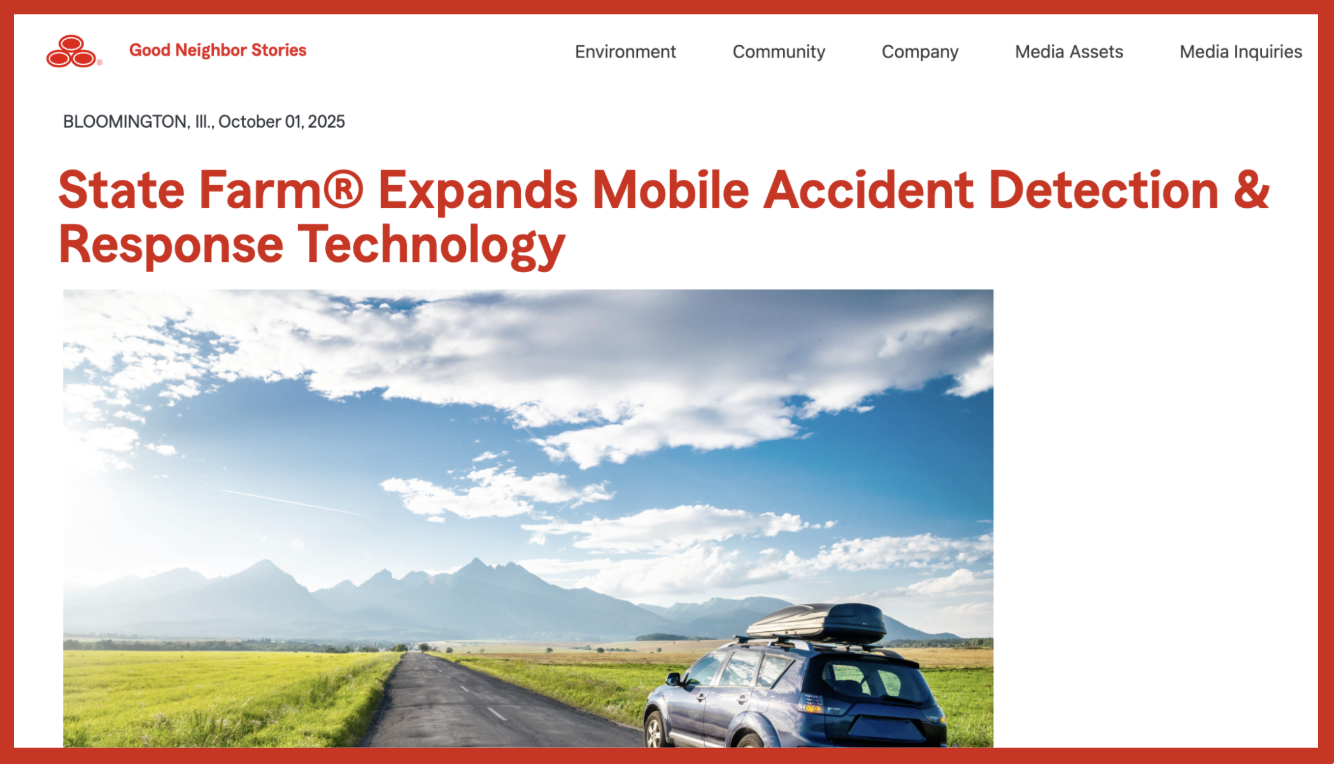
Original text here from Patrice Bernard (LinkedIn)
State Farm is making a significant move in the car-insurance space by broadly deploying mobile accident-detection and response technology in its app.
According to a recent press release, the insurer is launching an upgraded version of its mobile application in states such as Illinois and Florida. The key features include:
Subscribe to our newsletter:
Road conditions and behavioral risks have changed rapidly: distracted driving, severe weather events, and increased traffic complexity are creating a “perfect storm” of risk for insurers. State Farm cites research showing that 65 % of drivers believe it’s safe to look away from the road for two seconds—and studies show that doing so doubles accident risk.
By deploying accident-detection capabilities directly on drivers’ phones, the insurer aims to shift from reactive claim management to proactive incident mitigation, potentially reducing loss severity and improving customer safety.
State Farm’s move signals a paradigm shift in car-insurance risk management. Detection and immediate response are being embedded within the driver’s device, blurring the lines between passive policyholder and active risk agent. If implemented effectively, this could not only reduce claim severity but also reshape the competitive landscape of auto-insurance.